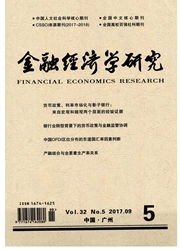

 中文摘要:
中文摘要:
一个扩展的金融抑制增长效应的理论模型表明,长期内,竞争机制使金融租金趋于耗散,抑制资本形成的直接后果是实际增长率低于有保障和自然增长率,并带来高政府赤字、高通胀和高失业。从20世纪70年代中后期开始,发达经济、新兴市场、欠发达和转轨经济相继推行自由化。此进程中,非对称性调整产生负增加值,金融、实际部门的任何冲击及制度与政策失灵、规制放松路径错误等,均可引发危机。抑制愈严重,负增加值效应愈烈,危机概率也愈大。使用四类经济体110个国家1980—2001年的数据,二元选择模型的经验研究基本证实了上述假说。
 英文摘要:
英文摘要:
This paper develops a model on the economic effectiveness of the Financial Distress. The model tells us that distress may help some sectors to grow rapidly and accelerate the economy in short terms. But in long terms, the rent from repression would be dissipa- ted because of competition, so the financial repression may go against the formation of capital, and then the economy grows less than the warranted and natural rate. It also results in such problems as high inflation ,high rate of unemployment and high deficit of government. Encountering these problems, developed countries such as the USA begin to deregulate their financial system in the late of 1970s, and the EMS, developing and transformed countries start the financial liberalization one after the other. However, the liberalization may bring about negative added value ,which is the basic recourse of risk during the course of liberalization. The risk may break up under any shock from the real or financial sectors, any failure of institution or policy, or the disorder of step of deregulation. The more serious distress, the more negative added value, there is a larger probability of risk. Using the data of four types of 110 countries in 1980-2001, an empirical study on the hypothesis above gives some robust evidence.
 同期刊论文项目
同期刊论文项目
 同项目期刊论文
同项目期刊论文
 期刊信息
期刊信息
